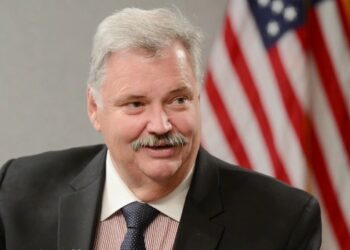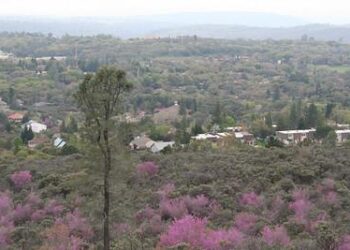Lake Tahoe, California/Nevada (Dec 12 2023) – While snow adorns the trees around Lake Tahoe, the Tahoe Fire and Fuels Team (TFFT) remains steadfast in its commitment to year-round wildfire preparedness. The collaborative initiative, formed in 2008, brings together 21 federal, tribal, state, and local agencies dedicated to safeguarding lives, property, and the environment in the Lake Tahoe Basin.
Priority Fuel Reduction Projects:
Chief Isaac Powning, Incident Commander of the TFFT, underscores the significance of year-round actions to improve forest health and enhance community safety.
“One of the most important ways that we improve forest health and our community’s safety is by implementing priority fuel reduction projects such as thinning trees and conducting prescribed burns.”
2023 Achievements:
In the course of 2023, TFFT partners successfully treated extensive forested and urban areas to mitigate hazardous fuels. Notable progress was made on urgent Environmental Improvement Program (EIP) projects, including NV Energy’s Resilience Corridors Project. This initiative involves thinning forests around utility infrastructure to reduce the risk of fire ignition. The ongoing project aims to create resilient forests along 28 miles of NV Energy utility infrastructure, encompassing 290 acres.
Jesse Murray, Vice President of energy delivery and natural disaster protection for NV Energy, emphasized the dual benefit of the project:
“This work is crucial in improving the safety and resilience of our power system that serves the Lake Tahoe Basin, while at the same time improving forest health and being respectful of the sensitive ecosystem and environment the Tahoe area has to offer.”
Biomass Management and Prescribed Burns:
Thinning forests is just the first step; partners must manage biomass by either removing it or conducting prescribed burns. California State Parks executed a prescribed fire understory burning operation in Burton Creek State Park, contributing to forest health and enhancing fire protection for adjacent communities.
Rich Adams, Natural Resources Manager with California State Parks, highlighted the importance of such burns:
“Most people recognize that the smoke generated from these prescribed burns is vastly better than the smoke we’d see if a wildfire burned through an un-maintained landscape.”
Community Engagement and Preparedness:
TFFT partners actively engage with the community to educate residents on wildfire preparedness. Fire protection districts and partners provided recommendations for chipping, home hardening, and defensible space for thousands of privately-owned properties. The Tahoe Resource Conservation District (Tahoe RCD) assisted in creating Fire Adapted Communities, with 31 certified communities to date.
Jason Brand, Fire Adapted Communities Program Manager with Tahoe RCD, noted the growth: “More and more communities are becoming Firewise, a national recognition program to assist with becoming more resistant to wildfire.”
Safeguarding Against Catastrophic Wildfires:
Tahoe RCD has spearheaded the Community Wildfire Protection Plan (CWPP) update, a crucial initiative for safeguarding against catastrophic wildfires. The CWPP draft, available for public comment in spring 2024, will help attract funding and prioritize projects in Lake Tahoe.
Isaac Powning, TFFT Incident Commander, expressed gratitude for the collective efforts:
“Thank you to everyone who has contributed to making Lake Tahoe safer. We’ve got a long way to go, but I’m confident we’ll get there by continuing to collaborate on key forest health projects, community education, and partnerships at all levels.”
Learn More: Explore Tahoe’s forest health-focused Environmental Improvement projects at eip.laketahoeinfo.org and find resources for year-round wildfire preparedness at tahoelivingwithfire.com.










